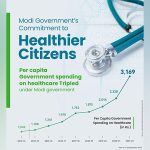In August, job openings in the United States unexpectedly increased, giving a glimmer of hope in a slowing labor market. The Job Openings and Labor Turnover Survey (JOLTS) report showed an increase in job openings and a decline in layoffs, with 1.13 job openings for every unemployed person. However, resignations were at a four-year low, indicating a lack of confidence in the job market among Americans. Despite Fed Chair Jerome Powell’s reluctance to cut interest rates further, the labor market has cooled over the past year, leading to the likelihood of a 25 basis points cut in November.
Job openings rebounded to 8.040 million in August, with the construction industry leading the increase. However, hires decreased, particularly in retail trade, transportation, warehousing, and manufacturing. The hires rate dropped to 3.3%, with small to medium-sized companies reporting a decline in vacancies. On the other hand, layoffs declined overall, with significant decreases in retail trade and healthcare sectors. Resignations fell to their lowest level in four years, contributing to a decrease in the quits rate and potentially curbing wage inflation.
The slowdown in the labor market can be attributed to a decline in hiring following previous rate hikes by the Federal Reserve to combat inflation. The Fed is expected to further cut interest rates in November and December to address concerns over the labor market’s health. The escalating tensions in the Middle East have also impacted financial markets, with stocks trading lower and investors seeking refuge in the US dollar and Treasury yields.
Manufacturing remains stable, with the ISM reporting a slight decrease in factory employment and prices paid by manufacturers. New orders improved, but the overall manufacturing PMI remained below 50, indicating contraction in the sector. A recent port strike by the International Longshoremen’s Association could disrupt supply chains, though the impact may be mitigated by companies’ preparedness for such events. Overall, the labor market and manufacturing sector are facing challenges that may warrant further action by the Federal Reserve to stimulate growth.
Looking ahead, September’s employment report is expected to show a modest increase in nonfarm payrolls, but below-average job gains compared to previous months. The unemployment rate is forecasted to remain unchanged, reflective of a rise in labor supply due to increased immigration. The Fed’s focus on the labor market amid subsiding inflation highlights the delicate balance needed to sustain economic growth and stability in the current climate of uncertainty.











